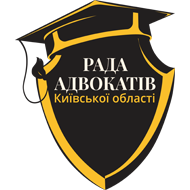The material was prepared by Tetyana Rabko , lawyer , advisor to LLC “METINVEST BUSINESS SERVICE” Metinvest Group, Deputy Chairman of the UNBA Committee on e-Justice and Cybersecurity of Advocacy.
 In the resolution of the Supreme Court composed of the panel of judges of the Second Judicial Chamber of the Civil Court of Cassation dated 12.03.2025 in case No. 146/775/24 ( https://surl.li/yokdjy) it is stated that the defendant and his representative, as users of the “Electronic Court” subsystem, have no opportunity to influence in any way the content and appearance of the electronic power of attorney, since it is the system that forms it according to the appropriate algorithm and sample. Therefore, placing a mark on notarization on such a power of attorney is impossible.
In the resolution of the Supreme Court composed of the panel of judges of the Second Judicial Chamber of the Civil Court of Cassation dated 12.03.2025 in case No. 146/775/24 ( https://surl.li/yokdjy) it is stated that the defendant and his representative, as users of the “Electronic Court” subsystem, have no opportunity to influence in any way the content and appearance of the electronic power of attorney, since it is the system that forms it according to the appropriate algorithm and sample. Therefore, placing a mark on notarization on such a power of attorney is impossible.
The circumstances of the case
The basis for filing an appeal and representing the defendant was a power of attorney formed in the “Electronic Court” subsystem on February 14, 2024, according to which PERSON_1 authorized PERSON_2 to represent his interests in the courts of Ukraine (including in the appellate and cassation instances) in case No. 146/775/24 with all the rights granted by law to a party to the case, including the right to sign, supplement statements of claim and other procedural documents provided for by law.
The specified form of power of attorney complies with paragraphs 30-35 of the Regulations on the procedure for the functioning of individual subsystems (modules) of the Unified Judicial Information and Telecommunications System.
The electronic power of attorney is generated by the “Electronic Court” subsystem independently, in accordance with the selected scope of authority of the representative (Supreme Court decision of September 8, 2021 in case No. 753/10165/21).
Taking into account the above, the appellate court, returning the appeal of PERSON_1 against the decision of the Tomashpil District Court of Vinnytsia Region dated December 17, 2024 on the grounds of failure of the defendant’s representative to provide a duly certified power of attorney for the right to represent her interests, did not pay attention to the fact that the defendant’s electronic mandate to the representative – PERSON_2 was formed and issued using the means and relevant algorithms of the “Electronic Court” subsystem, using the electronic cabinets and digital signatures of PERSON_1 and his representative – PERSON_2. The “Electronic Court” subsystem automatically formed such an electronic mandate and added it to the appeal filed by the representative on behalf of the principal.
The Court of Appeal, contrary to the specified norms of the law, did not take into account that the defendant and his representative, as users of the “Electronic Court” subsystem, have no opportunity to influence in any way the content and appearance of the electronic power of attorney, since it is the system that forms it according to the appropriate algorithm and sample. Therefore, placing a mark about notarization on such a power of attorney is impossible.
Thus, the appellate court reached the erroneous conclusion that PERSON_1’s appeal should be returned.
A similar approach to resolving the issue of compliance with the form of an appeal filed by a party’s representative is set out in the Supreme Court resolutions of February 18, 2021 in case No. 300/1329/20, November 17, 2021 in case No. 344/13150/20, December 4, 2024 in case No. 753/8640/24 (proceedings No. 61-11983св24), January 10, 2025 in case No. 753/16269/23 (proceedings No. 61-8527св24) and March 5, 2025 in case No. 357/10920/24 (proceedings No. 61-17105св24).
We offer you several interesting publications of the lecturer:
The course of procedural terms in the “Electronic Court” subsystem: analysis of judicial practice https://surli.cc/irxmsr
Filing an appeal in the context of electronic justice: a review of judicial practice https://surl.li/ryjlsx




